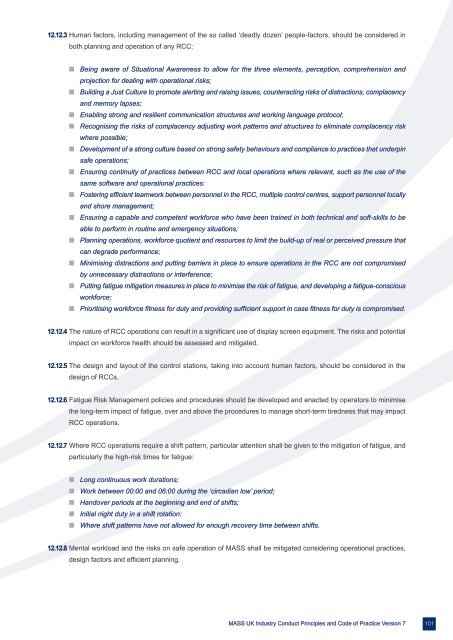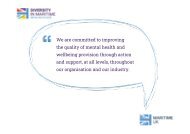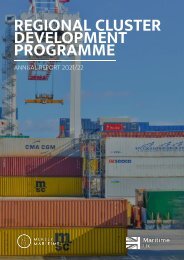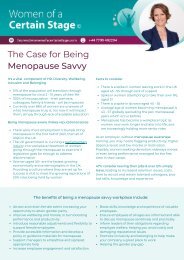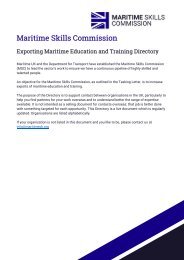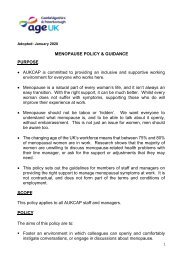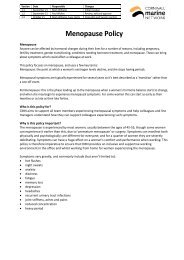COP_2023_V7_pages
Create successful ePaper yourself
Turn your PDF publications into a flip-book with our unique Google optimized e-Paper software.
12.12.3 Human factors, including management of the so called ‘deadly dozen’ people-factors, should be considered in<br />
both planning and operation of any RCC:<br />
n Being aware of Situational Awareness to allow for the three elements, perception, comprehension and<br />
projection for dealing with operational risks;<br />
n Building a Just Culture to promote alerting and raising issues, counteracting risks of distractions, complacency<br />
and memory lapses;<br />
n Enabling strong and resilient communication structures and working language protocol;<br />
n Recognising the risks of complacency adjusting work patterns and structures to eliminate complacency risk<br />
where possible;<br />
n Development of a strong culture based on strong safety behaviours and compliance to practices that underpin<br />
safe operations;<br />
n Ensuring continuity of practices between RCC and local operations where relevant, such as the use of the<br />
same software and operational practices:<br />
n Fostering efficient teamwork between personnel in the RCC, multiple control centres, support personnel locally<br />
and shore management;<br />
n Ensuring a capable and competent workforce who have been trained in both technical and soft-skills to be<br />
able to perform in routine and emergency situations;<br />
n Planning operations, workforce quotient and resources to limit the build-up of real or perceived pressure that<br />
can degrade performance;<br />
n Minimising distractions and putting barriers in place to ensure operations in the RCC are not compromised<br />
by unnecessary distractions or interference;<br />
n Putting fatigue mitigation measures in place to minimise the risk of fatigue, and developing a fatigue-conscious<br />
workforce;<br />
n Prioritising workforce fitness for duty and providing sufficient support in case fitness for duty is compromised.<br />
12.12.4 The nature of RCC operations can result in a significant use of display screen equipment. The risks and potential<br />
impact on workforce health should be assessed and mitigated.<br />
12.12.5 The design and layout of the control stations, taking into account human factors, should be considered in the<br />
design of RCCs.<br />
12.12.6 Fatigue Risk Management policies and procedures should be developed and enacted by operators to minimise<br />
the long-term impact of fatigue, over and above the procedures to manage short-term tiredness that may impact<br />
RCC operations.<br />
12.12.7 Where RCC operations require a shift pattern, particular attention shall be given to the mitigation of fatigue, and<br />
particularly the high-risk times for fatigue:<br />
n Long continuous work durations;<br />
n Work between 00:00 and 06:00 during the ‘circadian low’ period;<br />
n Handover periods at the beginning and end of shifts;<br />
n Initial night duty in a shift rotation:<br />
n Where shift patterns have not allowed for enough recovery time between shifts.<br />
12.12.8 Mental workload and the risks on safe operation of MASS shall be mitigated considering operational practices,<br />
design factors and efficient planning.<br />
MASS UK Industry Conduct Principles and Code of Practice Version 7 101


